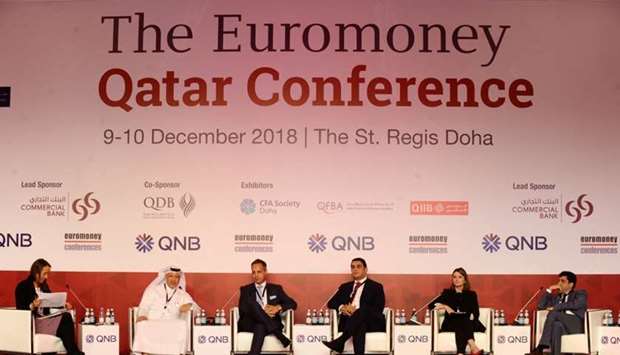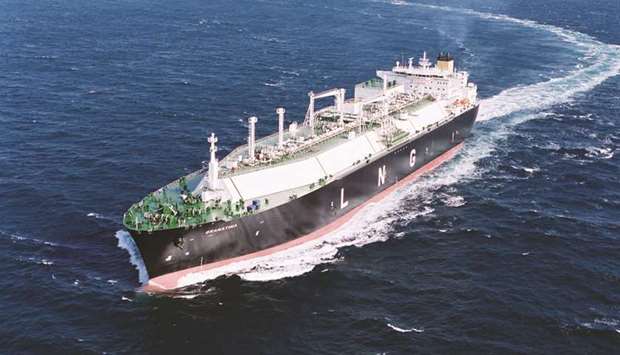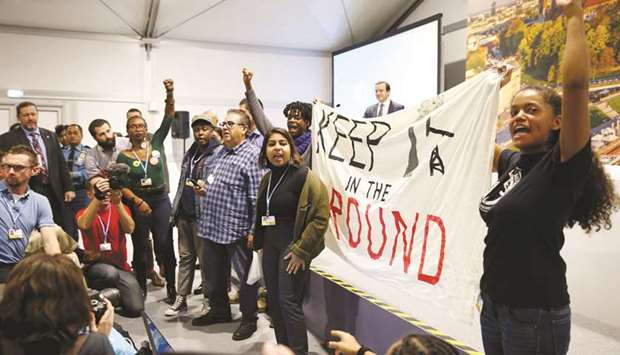Germany wobbles on Russian gas pipeline as tensions mount

Bloomberg/Berlin
Support in German Chancellor Angela Merkel’s coalition for a major new Russian gas pipeline is slipping as frustration with the Kremlin’s brinkmanship grows and pressure from US President Donald Trump starts to bite.
Nord Stream 2, an $11bn project that will double the natural gas supply under the Baltic Sea to Germany, faces growing scepticism among German officials who had previously defended it against criticism from Trump and some European Union allies, according to senior lawmakers. The shift could translate into pressure on Merkel’s government to back down on the controversial pipeline and possibly delay its implementation.
Social Democratic lawmaker Nils Schmid, whose party has been a reliable supporter of the project, said too many decision-makers in Berlin had been slow to factor in Nord Stream’s geopolitical significance. It will reduce the volume of gas pumped through Ukraine as Russia attempts to stifle its neighbour’s economy by depriving it of lucrative transit fees.
“The debate in Germany has become more critical,” Schmid, the junior coalition party’s point man on foreign policy, said in an interview, adding that the project shouldn’t go forward until Russia and Ukraine reach a transit accord. “It would have been better to take this political dimension into account.”
The 1,200-km (750-mile) undersea pipeline – being constructed by Russia’s Gazprom PJSC to bolster German supplies as Norwegian, Dutch and domestic sources dry up – has been pilloried by some of the country’s allies, who say it bolsters Europe’s reliance on Russian energy and bypasses key partners such as Ukraine. Trump has blasted the project as holding Germany “captive” to Russia.
The ground is shifting, with an ever more fraught relationship with Russian President Vladimir Putin, particularly since the November seizure of two dozen Ukrainian sailors near the Sea of Azov. Merkel, who has sparred with Putin since the 2014 annexation of Crimea from Ukraine, is demanding the release of the naval personnel.
The Azov incident in the Kerch Strait has soured prospects that Merkel’s diplomacy can scale back the conflict in eastern Ukraine, according Juergen Hardt, a lawmaker in Merkel’s Christian Democratic Union who speaks on foreign affairs.
“The events on the Kerch Strait at least showed me that these are unfulfilled hopes,” Hardt said in an interview. “Russia, in my view, isn’t moving a millimetre from its objectives.”
Hardt said Germany’s governing parties need to find consensus with the European Commission on energy diversification and reliance on Russian gas. He also questioned the economic viability of Nord Stream, poking holes in the government’s previous defence of the project.
Merkel shifted her position on Nord Stream last April, acknowledging the political dimensions of the pipeline and departing from her previous insistence that it was solely a business venture by private investors. The project must not weaken Ukraine by disrupting its gas transmission system, she said at the time.
Richard Grenell, the US ambassador to Germany, welcomed the more sceptical view in Berlin, saying the pipeline project undermines the EU’s energy and security objectives.
“There is not only Russian gas coming through the pipeline, but also Russian influence,” Grenell said in a statement to Bloomberg News. “Now is not the time to reward Moscow.”
The US administration has indicated that sanctions on the pipeline are imminent. Trump brought tensions over Nord Stream into full view at last July’s NATO summit, raising the issue as he attacked Merkel over Germany’s slack defence spending.








